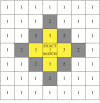Is synaesthesia more common in autism?
- PMID: 24252644
- PMCID: PMC3834557
- DOI: 10.1186/2040-2392-4-40
Is synaesthesia more common in autism?
Abstract
Background: Synaesthesia is a neurodevelopmental condition in which a sensation in one modality triggers a perception in a second modality. Autism (shorthand for Autism Spectrum Conditions) is a neurodevelopmental condition involving social-communication disability alongside resistance to change and unusually narrow interests or activities. Whilst on the surface they appear distinct, they have been suggested to share common atypical neural connectivity.
Methods: In the present study, we carried out the first prevalence study of synaesthesia in autism to formally test whether these conditions are independent. After exclusions, 164 adults with autism and 97 controls completed a synaesthesia questionnaire, Autism Spectrum Quotient, and Test of Genuineness-Revised (ToG-R) online.
Results: The rate of synaesthesia in adults with autism was 18.9% (31 out of 164), almost three times greater than in controls (7.22%, 7 out of 97, P <0.05). ToG-R proved unsuitable for synaesthetes with autism.
Conclusions: The significant increase in synaesthesia prevalence in autism suggests that the two conditions may share some common underlying mechanisms. Future research is needed to develop more feasible validation methods of synaesthesia in autism.
Figures
References
-
- Baron-Cohen S. Is there a phase of synaesthesia in normal development? Psyche. 1994. Special issue on Synaesthesia.
Grants and funding
LinkOut - more resources
Full Text Sources
Other Literature Sources



